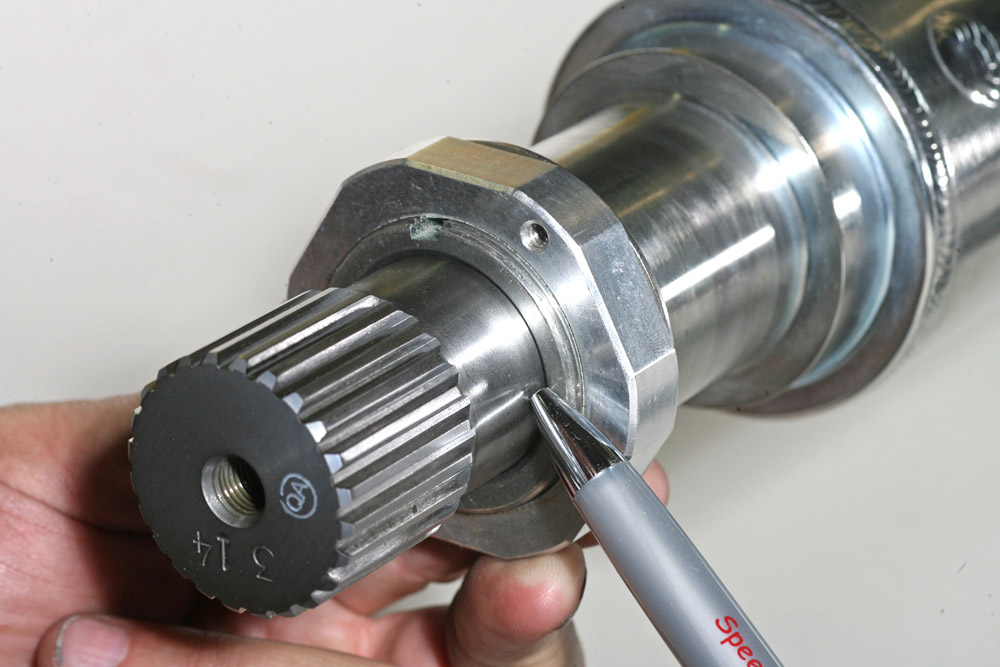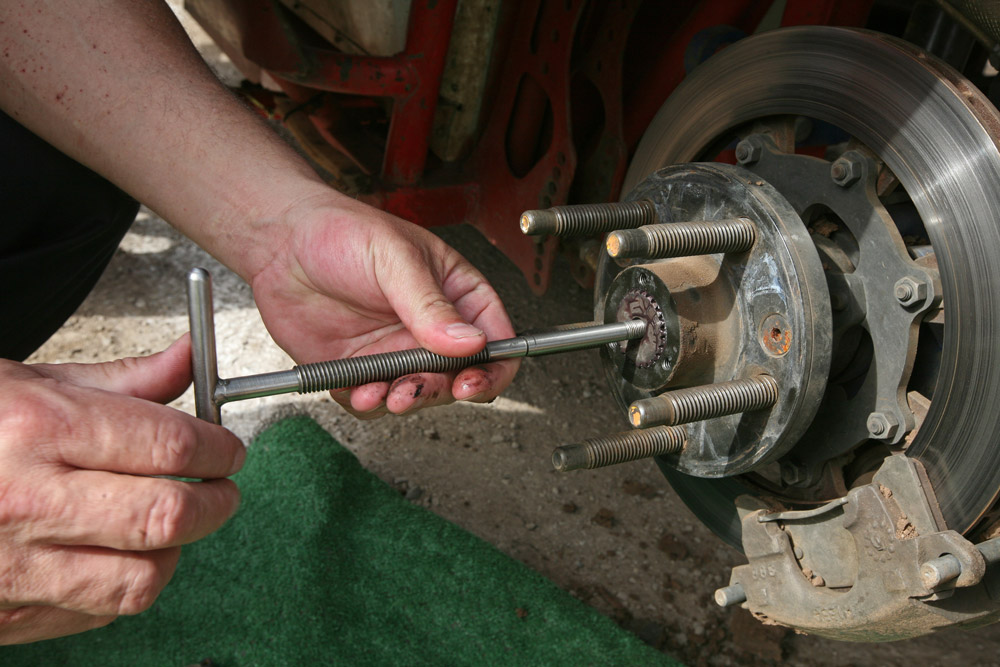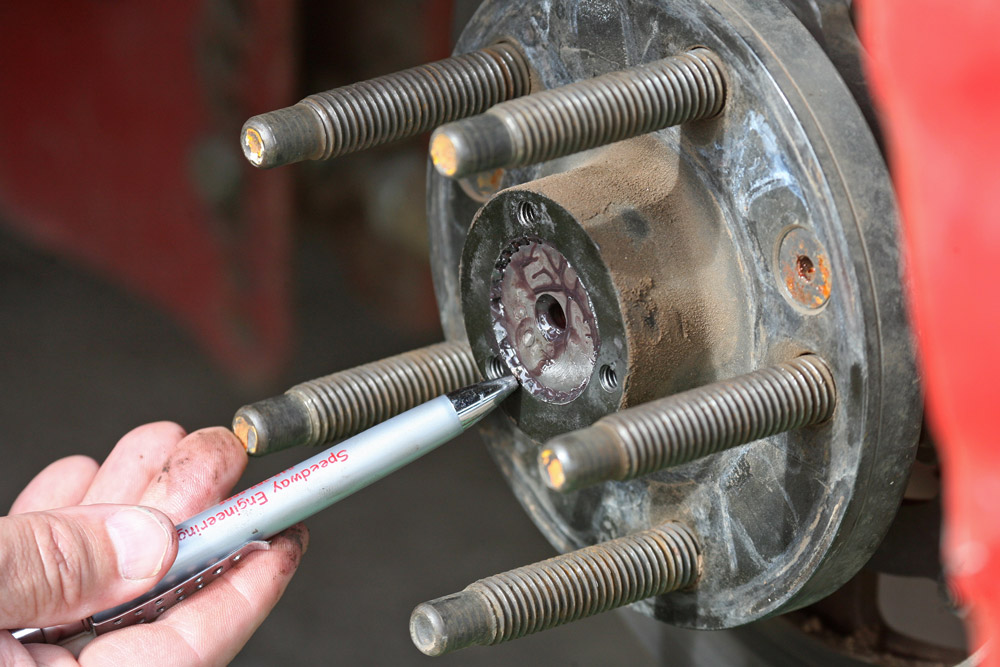How to Avoid Axle Accidents
How to Avoid Axle Accidents
Take these measures to ensure the longevity of your axles.
Story and photographs by Mike Adaskaveg
This article was originally published in the September 2014 issue of Speedway Illustrated magazine and has been used with their permission. For more information on America’s favorite motorsports monthly magazine, click here to visit their web site.

Speedway Engineering’s Frank Ferrell takes a look at the condition of a racer’s axle.
Axle problems in racing commonly result from the mistakes of racers. Those mistakes include forgetting to put an adjustment bolt on the end of an axle used in a full spool rear end without a cross pin or block.
“Because the full-spool rear end has no cross pin, the bolt takes up the space,” says Speedway Engineering’s Frank Ferrell.
The lack of a bolt allows the axle to go too far in, causing the 24-spline end of the axle to rub the end of the snout, creating a burr on the axle’s spline. Then, it can float back out and tear up the splines on the drive plate.
Axles intended for a Grand National rear end fit a five-by-five rear end, but may not have the required 1/8" clearance between the snout and axle, so the axle will eventually seize.
“Never go to the parts truck or order an axle without first checking the inner diameter of the snout,” says Ken Sapper, of Speedway Engineering.
A Grand National axle pushes easily into the snout of Speedway Engineering’s Mod Lite rear end housing (and most five-on-five housings), used for pavement and IMCA modifieds. While it seems to fit, it does not. It does not have enough clearance between the axle and snout. This results in galling and eventually the axle welds to the snout.

The proper axle, with an OD of 1.250" fits easily into the Mod Lite snout, which has a 1.375" ID. Carefully push it in and check the clearance between it and the snout. The 1/8" (0.125") clearance should be visible to the eye and can be felt when you move the axle.

The tube seal keeps the oil on the gears, where it needs it most. You should pack grease between the inner seals of the multilipped tube seal.

Although the seal is firmly seated in the rear end housing, it still allows movement of the axle. However, the seal can handle some misalignment from a small hit without allowing the gear oil to leak. Note the adjustment bolt on the left, which you need when not using a cross pin or block.

Take the dust cap off, use an axle tool, and remove it from the rear end housing to check for proper end play and wear of the axle’s splines and drive plate. Remove the old grease, which contains metallic particles that can act as an abrasive between the axle and drive plate. Clean the splines of both the axle and drive plate with solvent and a clean rag. Then add new grease. Never use anti-seize on the splines of the axle and drive plate, because it contains an abrasive.

Make sure you have an adjustment bolt on the inside end of either the left or right axle when a cross pin isn't used. Without an adjustment bolt, the splines may rub the end of the snout and get damaged. With an adjustment bolt, the axle fits the drive plate and does not move back and forth excessively.

